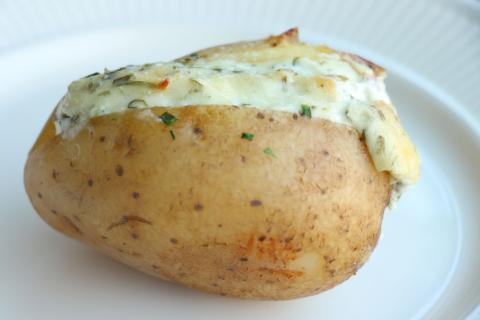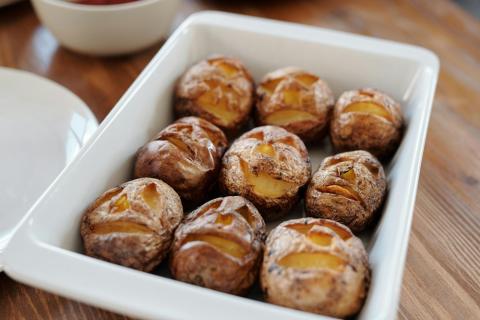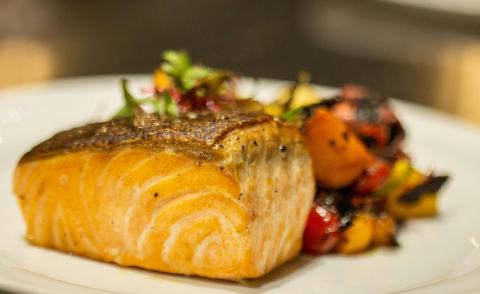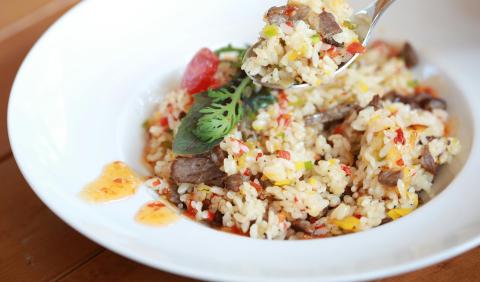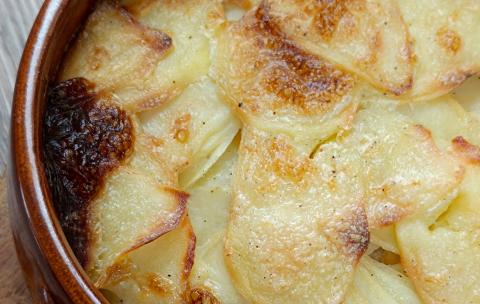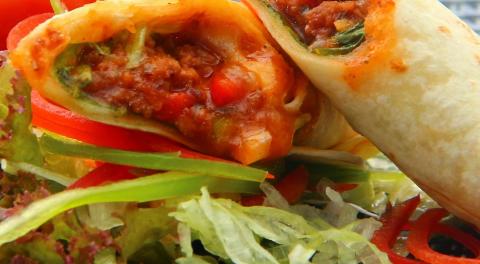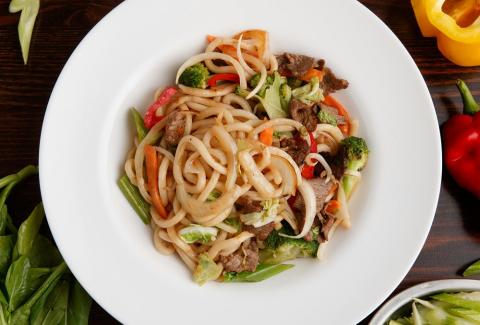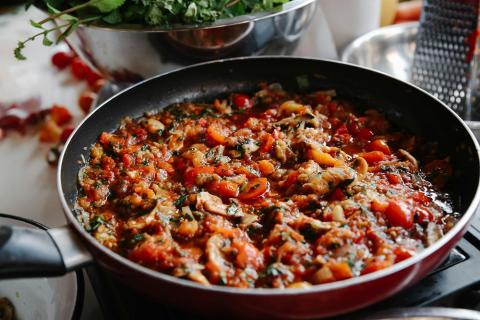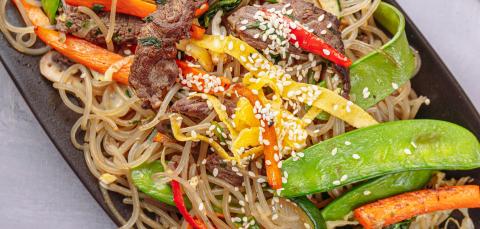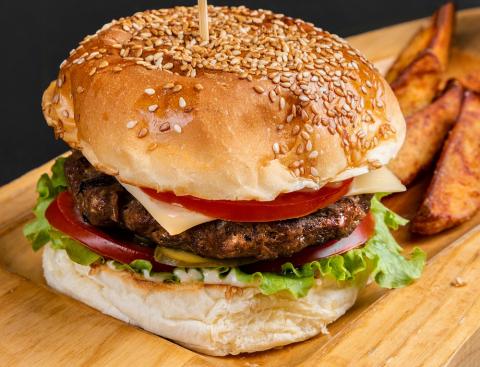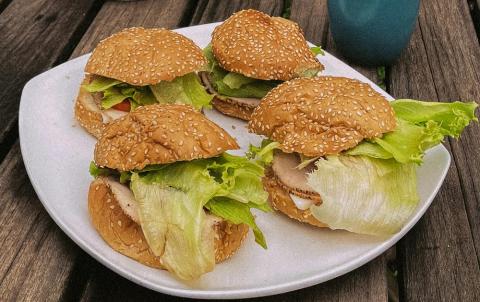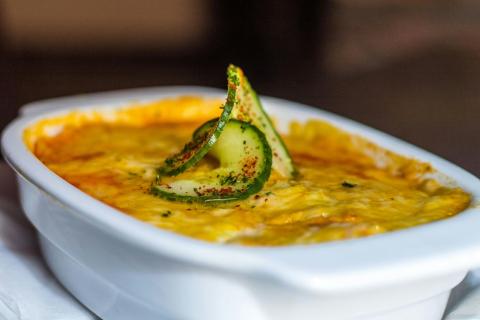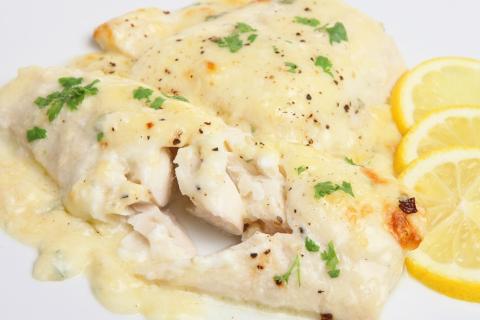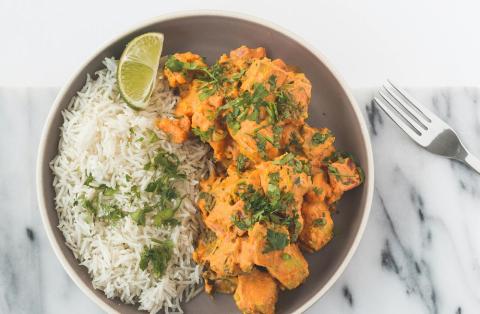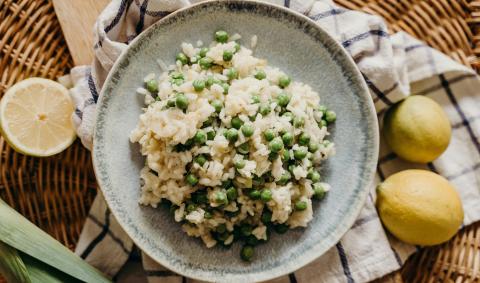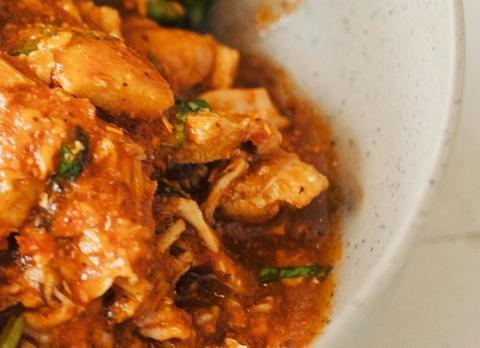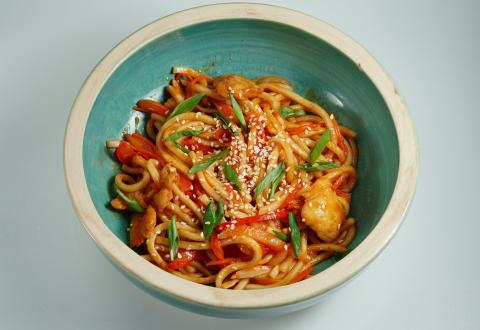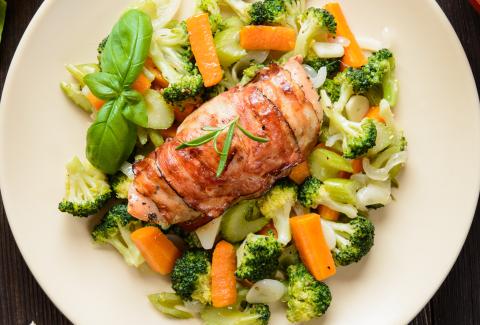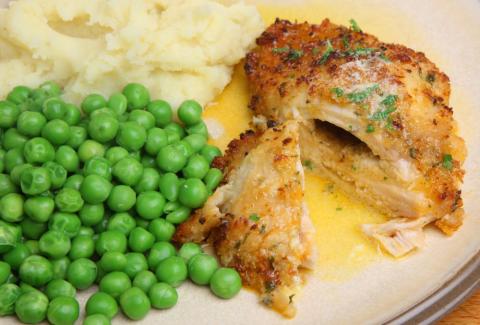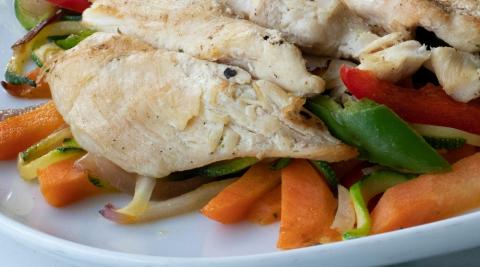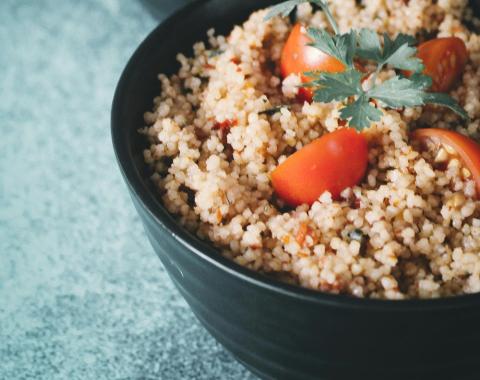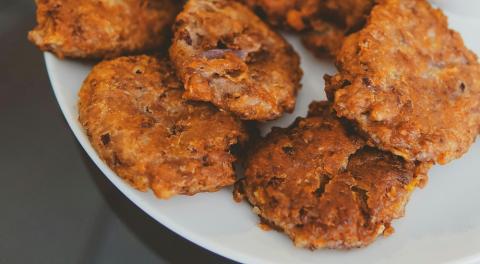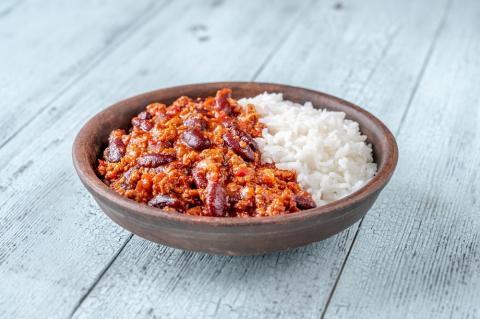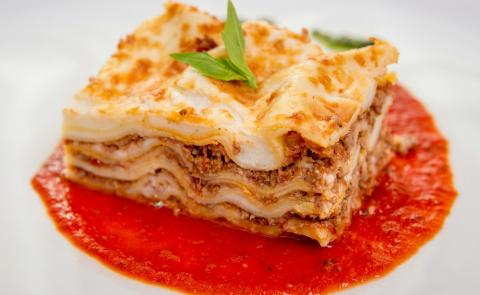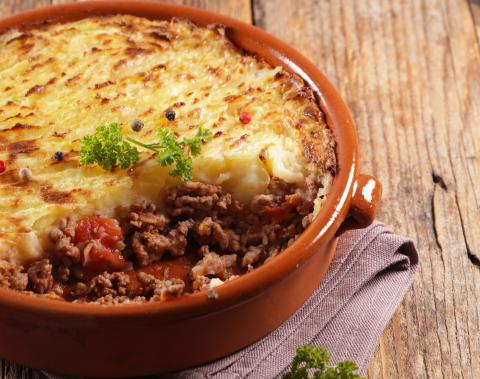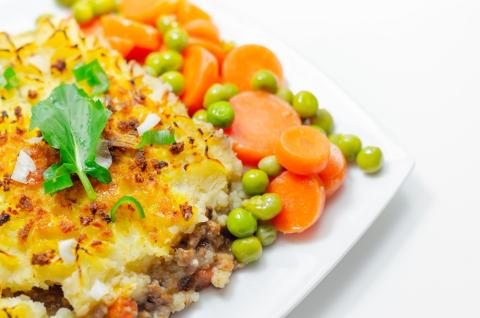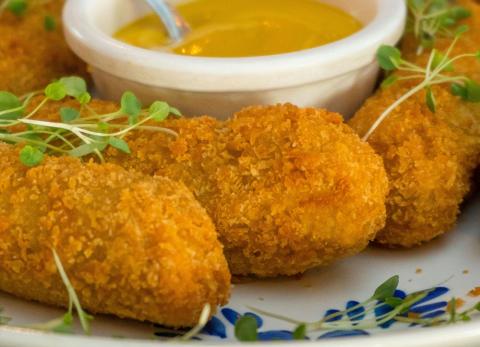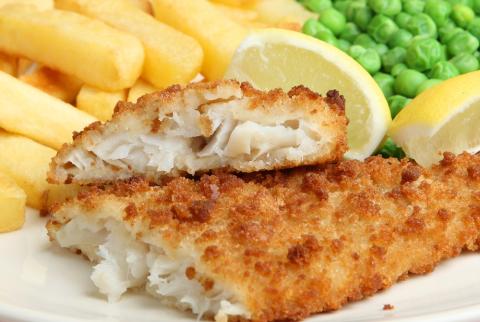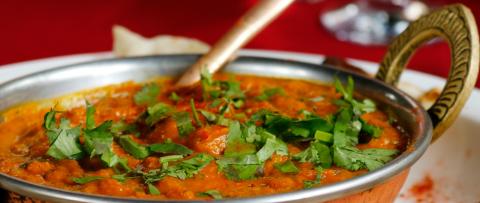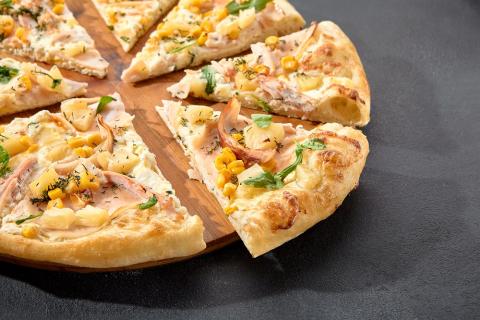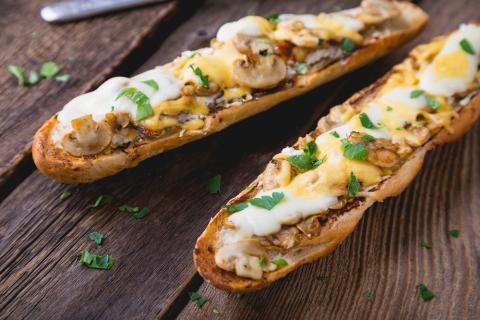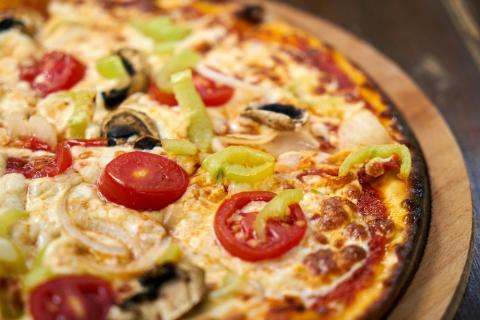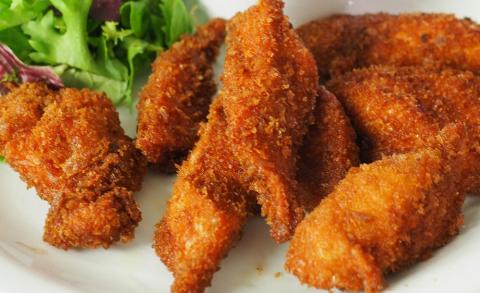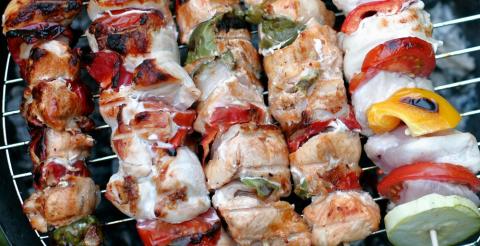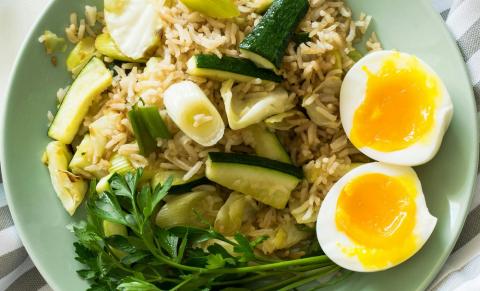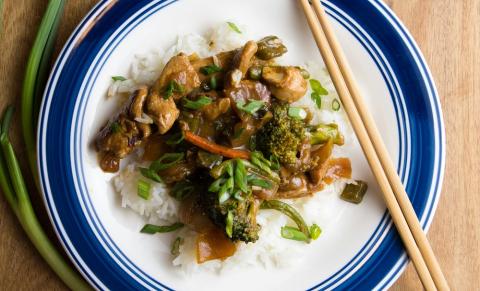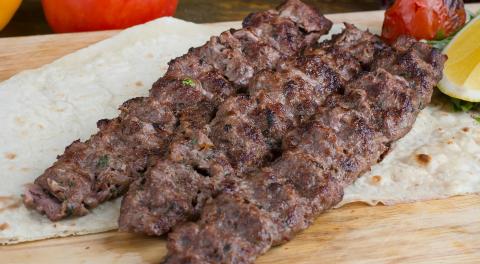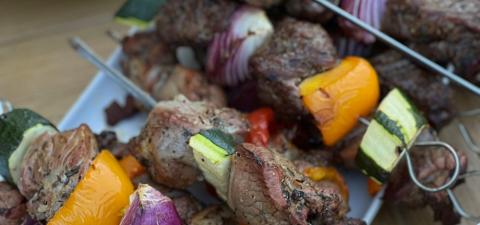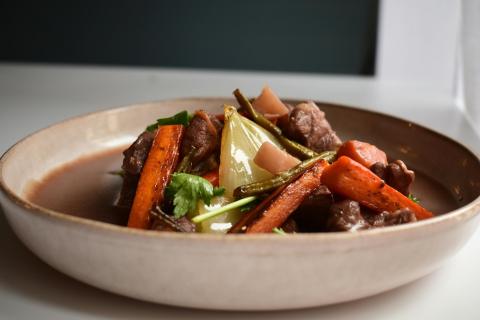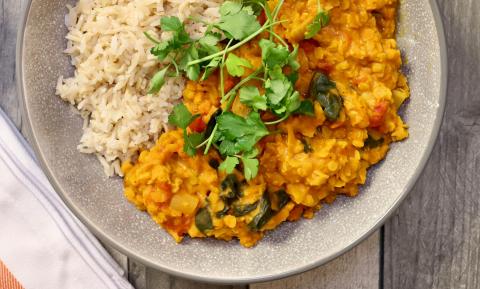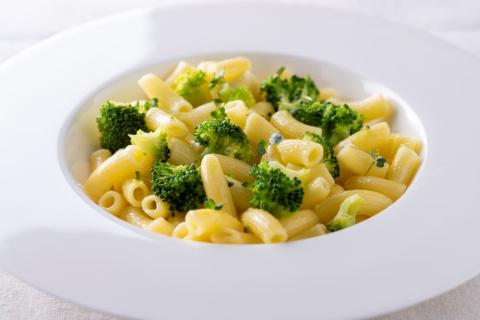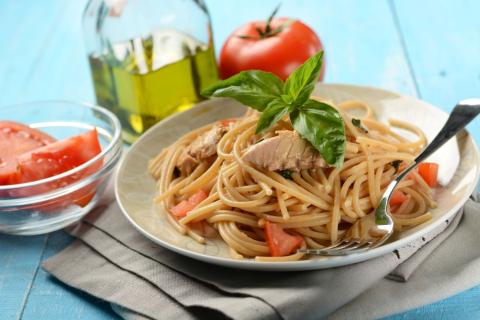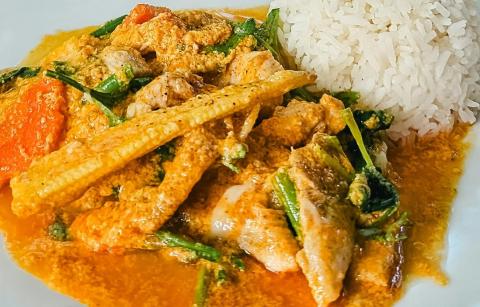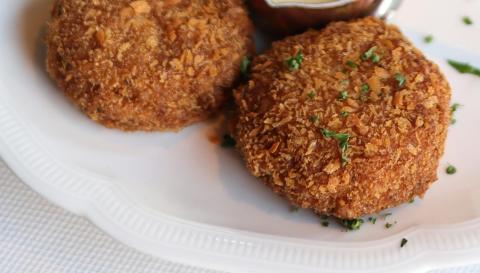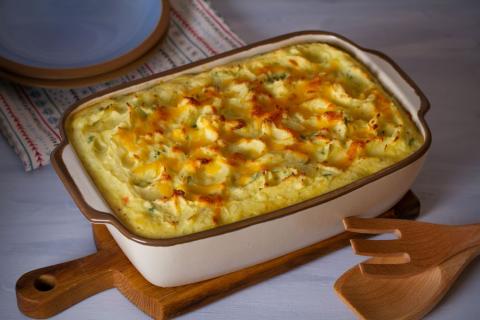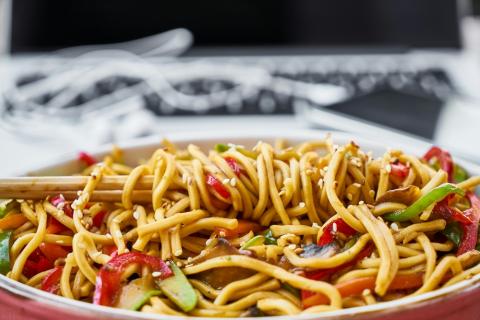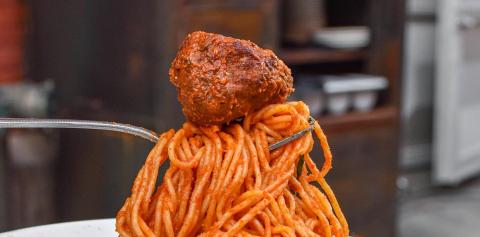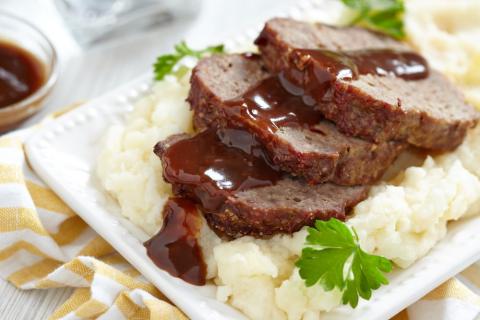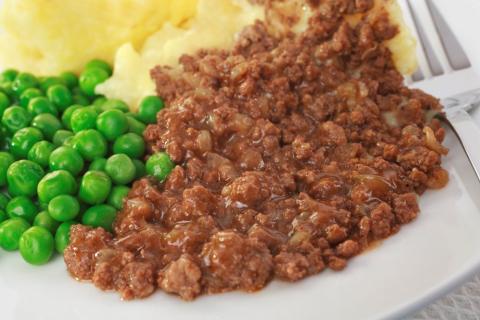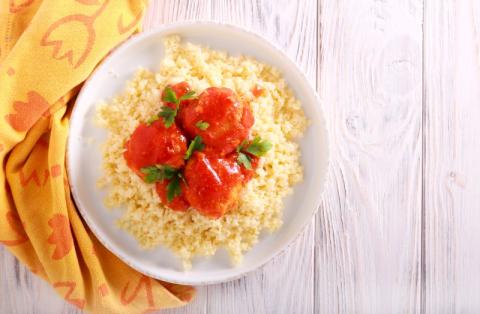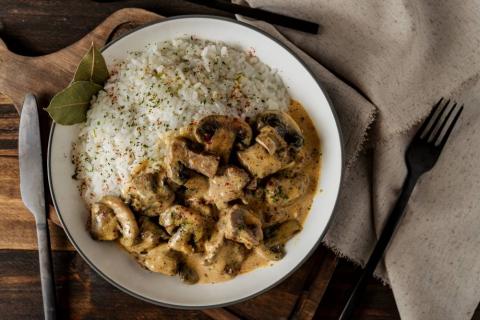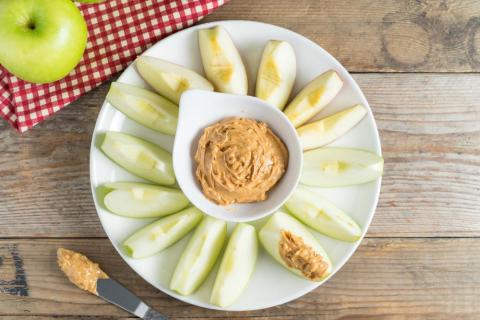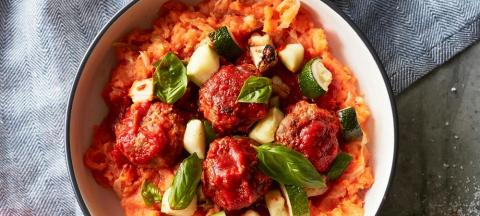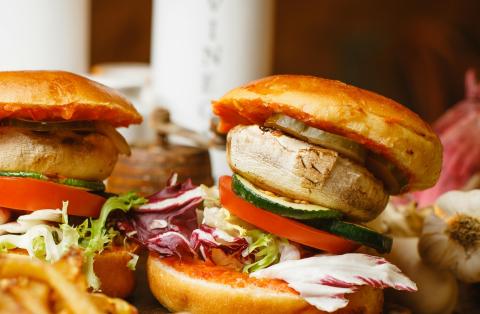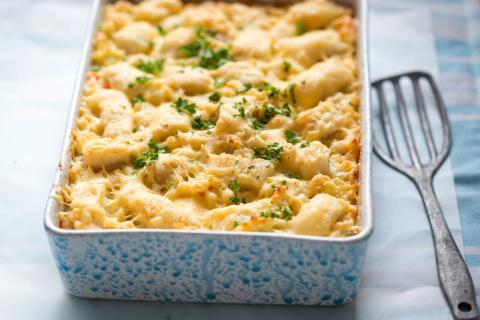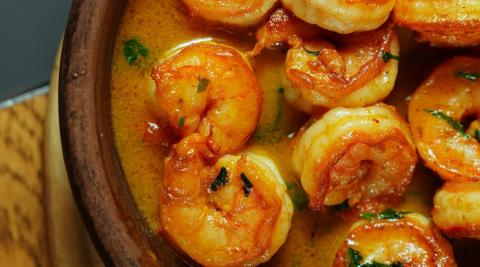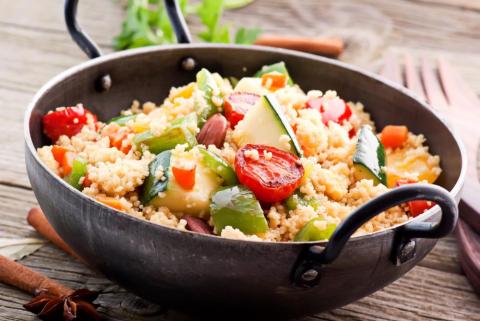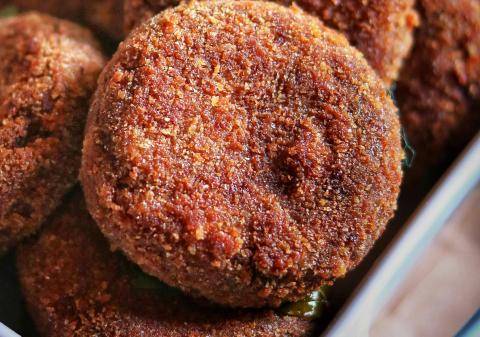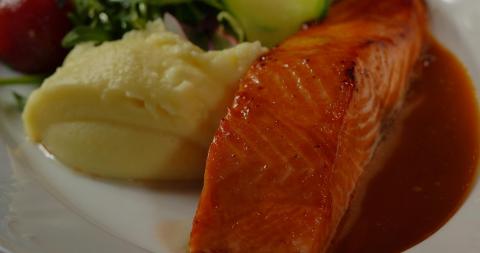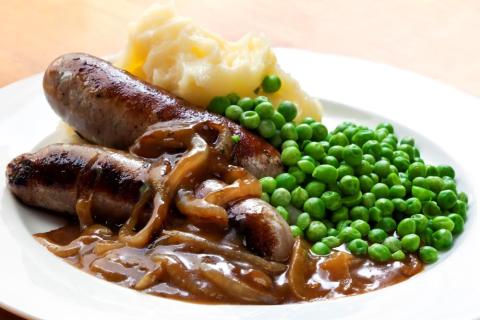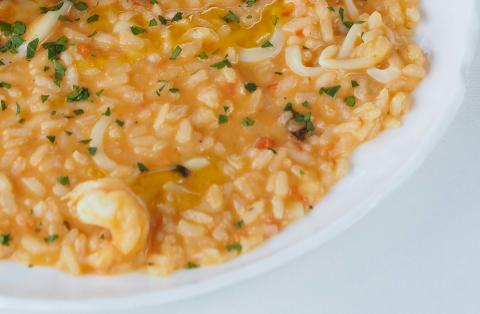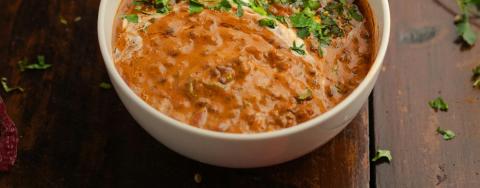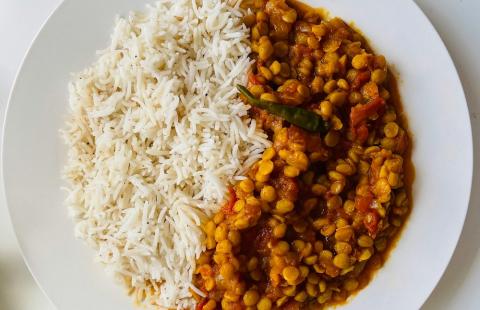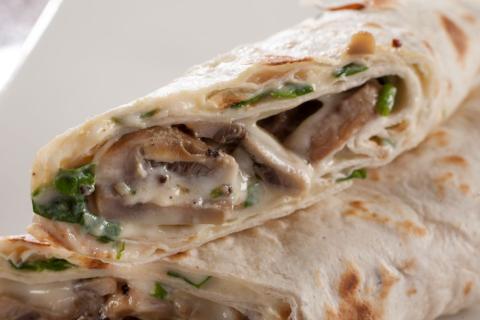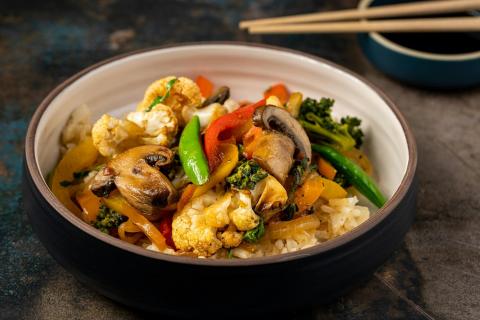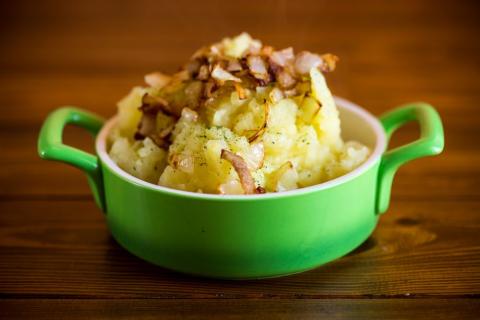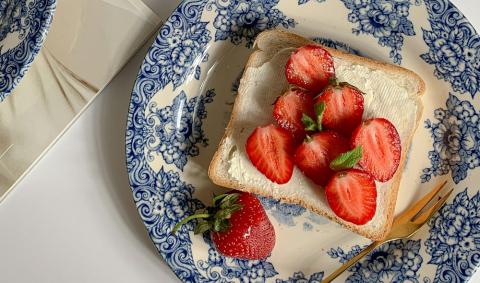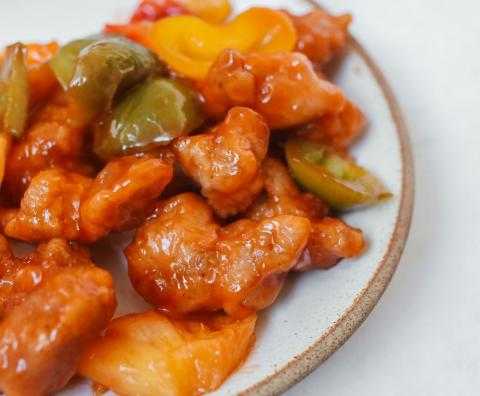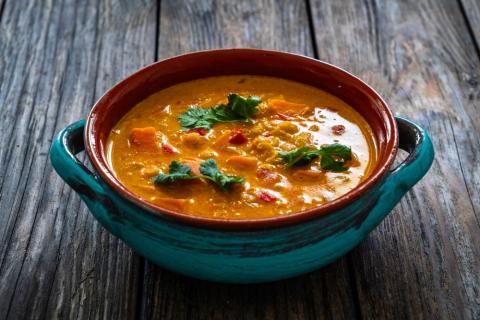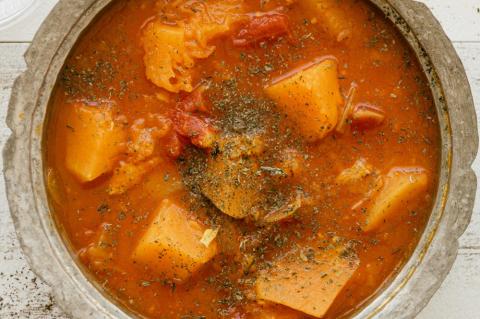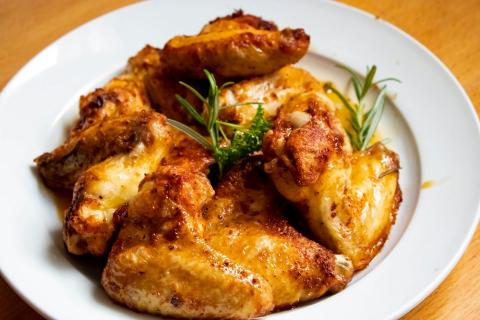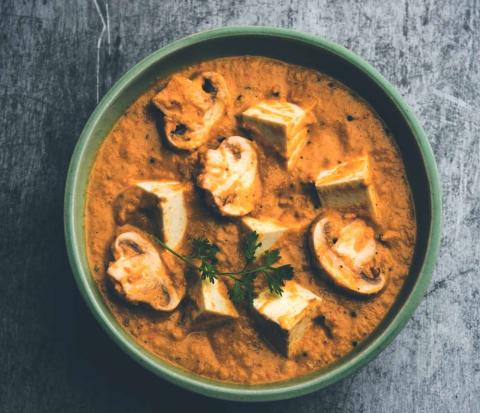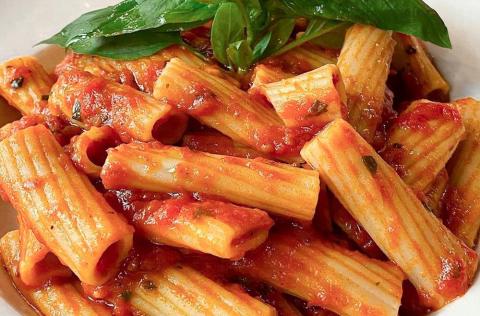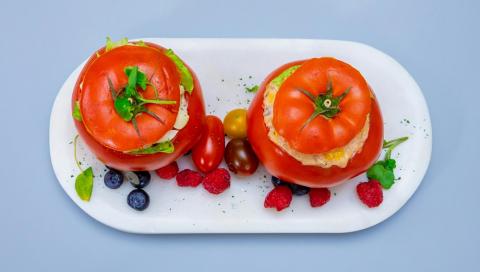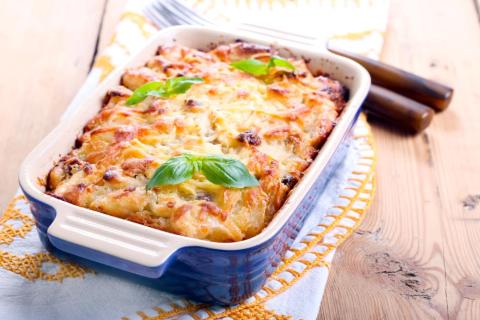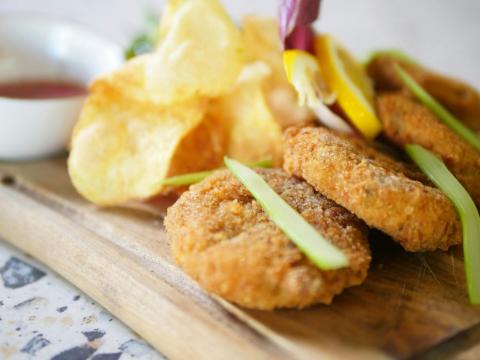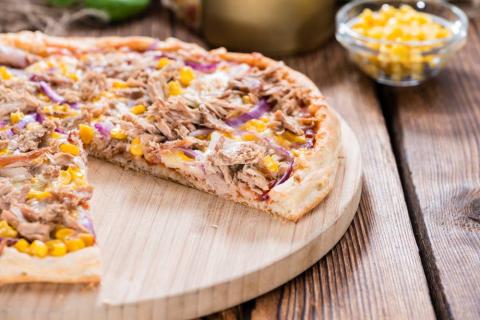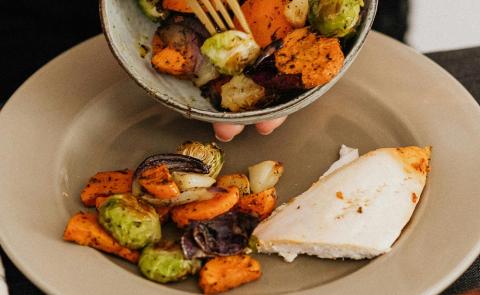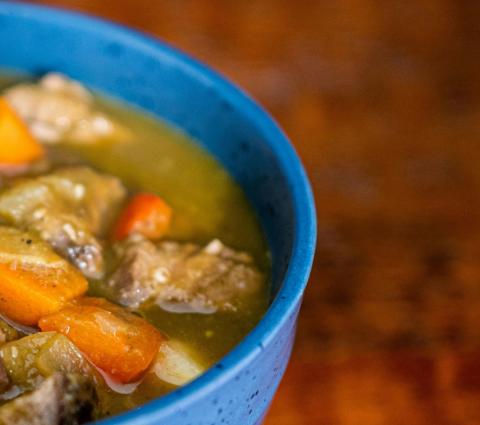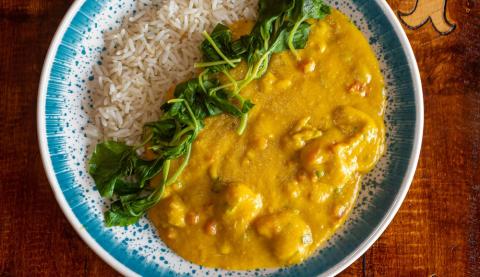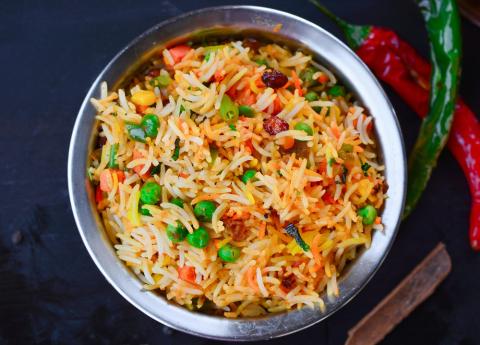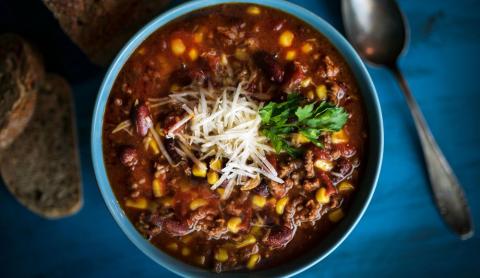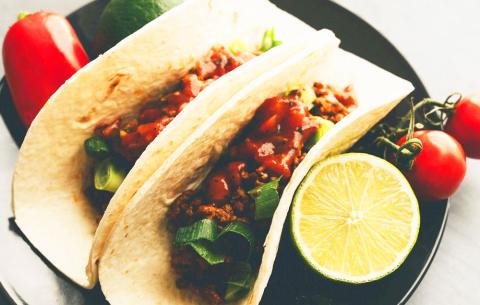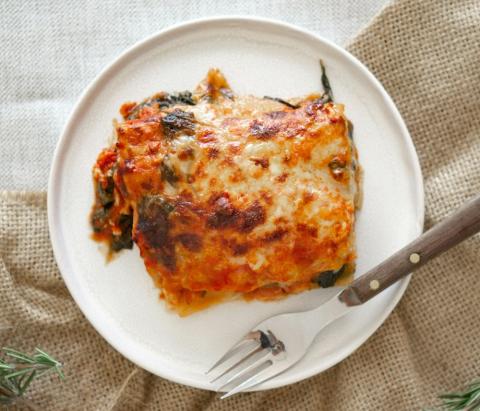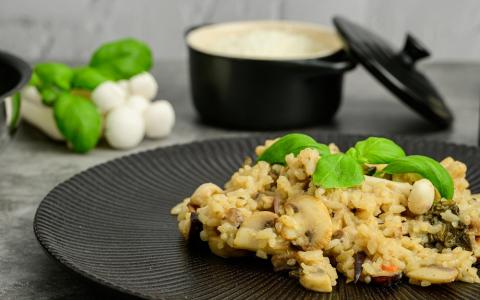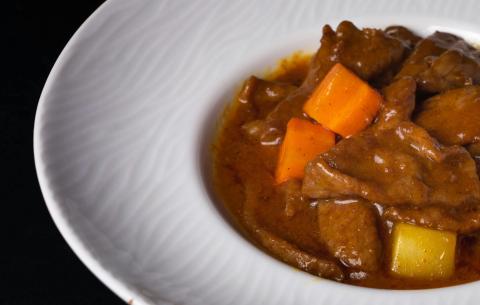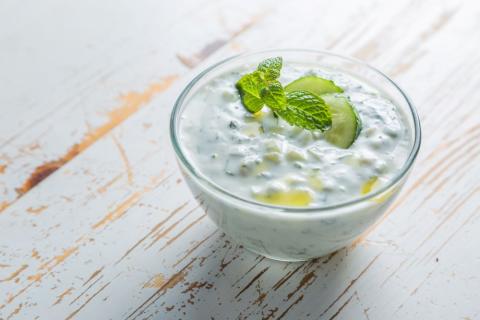- 2 Tins (800g) Chopped or Plum Tomatoes
- 1 Medium Sized (150g) Onion
- 1 (3g) Garlic Clove or 1 Teaspoon Garlic Puree
- 1 Teaspoon (1g) Mixed Herbs
- 2 Cups (300g) Dried Pasta
- 4 Heaped tablespoons (80g) Reduced Fat Cheese (grated)
- 1 Tablespoon (10g) Vegetable Oil
Ingredients
Allergy Disclaimer
Always check the label of each ingredient for allergy warnings.
Method
- In a large saucepan cook the pasta according to instructions on the packet.
- Peel and chop the onions and finely chop or crush peeled garlic.
- Heat the oil in a medium saucepan and add onion and garlic.
- Gently fry over medium heat until soft.
- Add the tinned tomatoes and herbs and simmer gently for 6-8 minutes. If using plum tomatoes, chop them up using a spoon when in the pan.
- Drain the pasta, add to the sauce and sprinkle the grated cheese on top.
Time Saver Tips
You could make this sauce in advance and reheat it to make life easier. You could also use a ready made tomato or vegetable sauce if you're in a hurry.
Cost Saver Tips
Why not see what veggies you have in your fridge or freezer? This dish is great if you add things like sliced mushrooms, a red pepper or a couple of carrots just before you put in the tinned tomatoes – then just cook it for three minutes. To save cooking time, you could try grating the carrot. Or feel free to add chicken. You can also make the sauce in bulk and either use it within 24 hours or freeze it for later. Remember to only reheat it once though.
Tips for Kids
How about seeing if your wee one likes this with their favourite shaped pasta and vegetables? If they’re not keen on veg, you could try adding extra to the sauce, then blending it until the sauce is smooth – and the veggies are less obvious! If they don't like lumps, you could also try using passata instead of chopped or plum tomatoes for a smoother sauce. To up their fibre intake, try using wholemeal pasta. If they like things spicy, you could pep it up with some chilli powder.
Nutritional Information
Based on a single serving of 382g (% of an adult's reference intake)
Energy
362 kcals ( 18 %)
1,373 kJ ( 18 %)
Fat
3.1 g ( 16 %)
Saturates
61.1 g ( %)
Sugar
11.3 g ( 13 %)
Salt
0.4 g ( 7 %)
Detailed nutritional information
| Per 100g | Per 382g serving | |
|---|---|---|
| Energy Kcals | 95 | 362 |
| Energy Kj | 359 | 1,373 |
| Protein | 4 g | 15.3 g |
| Total Fat | g | g |
| Saturated Fat | 0.8 g | 3.1 g |
| Carbohydrates | 16 g | 61.1 g |
| Total Sugars | 3 g | 11.3 g |
| NSP Fibre | 1.5 g | 5.5 g |
| Sodium | 42 mg | 160 mg |
| Salt | 0.1 g | 0.4 g |
Find out about nutritional labelling
Nutrition labels on the front of packaging
- Most of the big supermarkets and many food manufacturers display nutritional information on the front of pre-packed food.
- Front of pack nutrition labels provide information on the number of grams of fat, saturated fat, sugars and salt and the amount of energy (in kJ and kcal) in a serving or portion of a recipe.
- The labels also include information about reference intakes (expressed as a percentage) which are guidelines about the approximate amount of particular nutrients and energy required for a healthy diet.
- The colour coding tells you at a glance if the food has high (red), medium (amber) or low (green) amounts of fat, saturated fat, sugars and salt.
- The more greens on the label, the healthier the choice
- Amber means neither high nor low, so you can eat foods with all or mostly ambers on the label most of the time.
- Reds on the label means the food is high in that nutrient and these are the foods we should cut down on. Try to eat these foods less often and in small amounts.
Food shopping tips
If you’re trying to decide which product to choose, check to see if there's a nutrition label on the front of the pack. This will help you to quickly assess how your choices stack up. You will often find a mixture of red, amber and green colour coding for the nutrients. So when you're choosing between similar products, try to go for more greens and ambers and fewer reds if you want to make a healthier choice.
 Activities & Play
Activities & Play Behaviour
Behaviour Childcare
Childcare Development & Growing Up
Development & Growing Up Family, Friends & Relationships
Family, Friends & Relationships Feeding Your Baby
Feeding Your Baby Food & Eating
Food & Eating Health & Safety
Health & Safety Mental Health & Wellbeing
Mental Health & Wellbeing Money & Work
Money & Work Online Behaviour & Safety
Online Behaviour & Safety Pregnancy & First Days
Pregnancy & First Days School & Education
School & Education Sleep
Sleep


